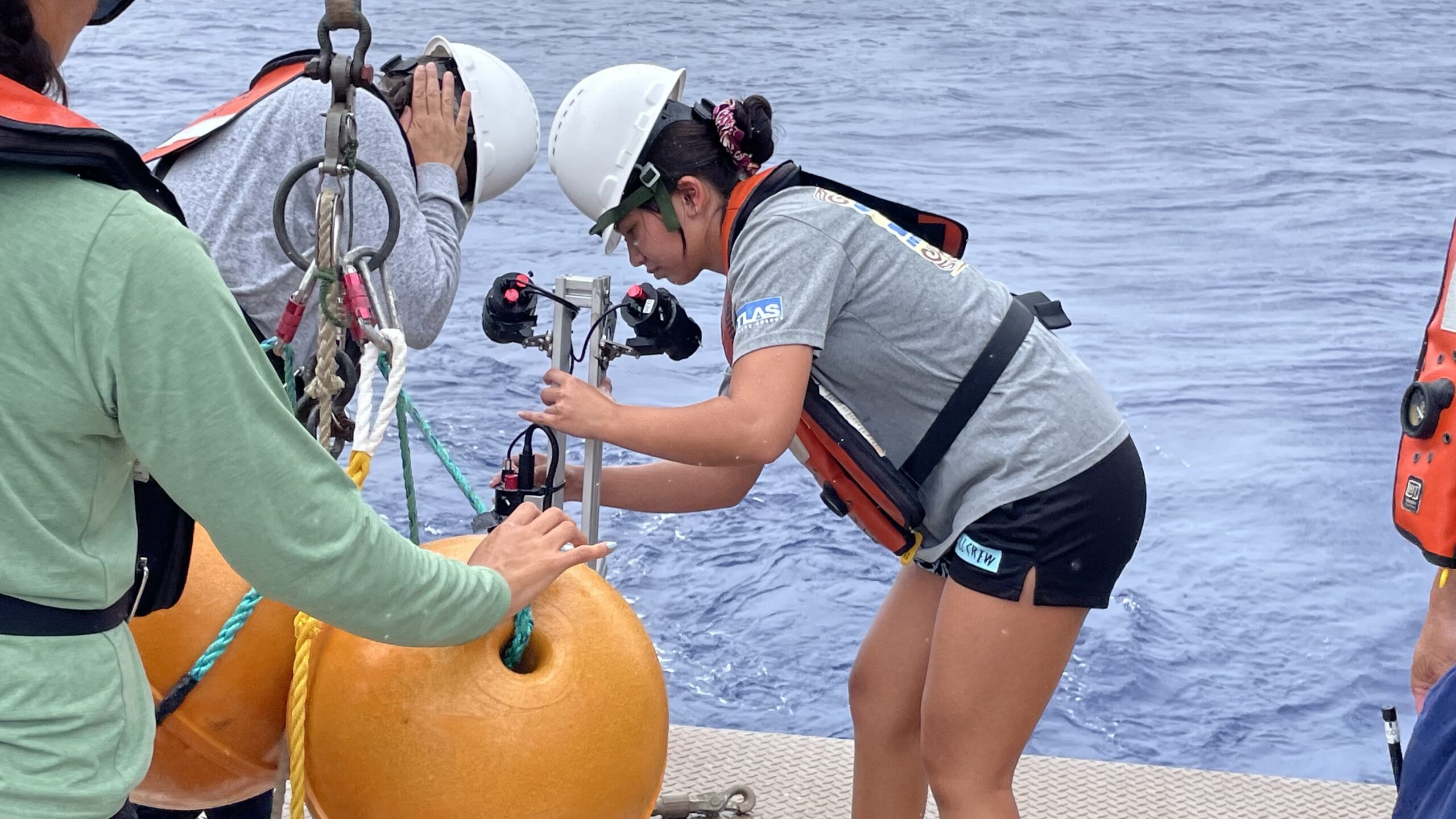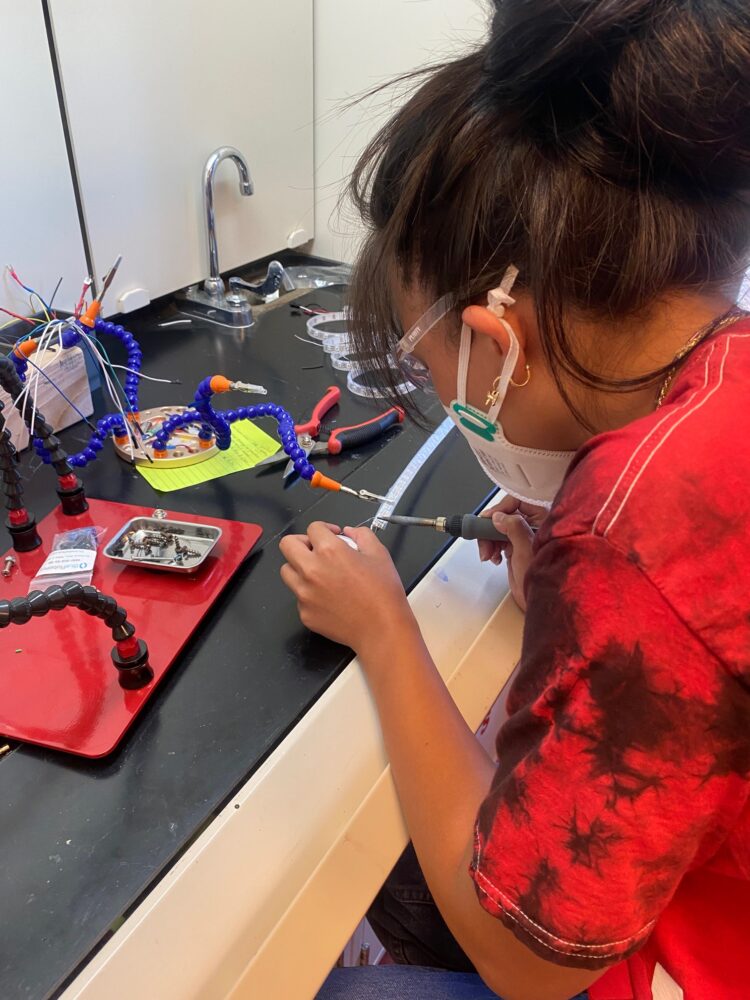Student Spotlight: Environmental science undergrad merges interests in ʻāina, engineering, biology
 Malia Martin prepares to deploy an artificial light prototype that aids deep sea underwater camera surveys.
Malia Martin prepares to deploy an artificial light prototype that aids deep sea underwater camera surveys.When asked where she is from, Malia Martin shared, “I’m born, raised, and rooted in the mokupuni of Oʻahu, specifically in the Ewa moku and the ahupuaʻa of Honouliuli.” As an undergraduate student in the Global Environmental Science (GES) program at the University of Hawai‘i (UH) at Mānoa, Martin is merging her love and respect for place, care for community, and passion for science.
“I decided to pursue GES because it allows me to expand my interests, in not only biology or engineering or physics, but to feel the freedom to try new things and see where my interests lie,” Martin said. “Through the program, I have been able to study plankton, bottomfish fisheries, engineering, coral ecology, and ocean chemistry.”
While she was a student at James Campbell High School, Martin was president of the school’s STEM Enrichment Club, which competed in Science Olympiad, Science Bowl, and Aloha Bowl. Immediately after high school, she interned with Kupu in their Hawaiʻi Youth Conservation Corps and found her first love: ʻāina.

Diving into fisheries science
After starting her college career at Leeward Community College and being drawn to oceanography, Martin worked with professor Donn Viviani and spent nearly three years sorting, counting, and identifying fish larvae sampled from Kanēʻohe Bay. In Viviani’s lab, she connected with NOAA researcher Don Kobayashi, who introduced her to NOAA’s Pacific Islands Fisheries Science Center Young Scientist Opportunity (PYSO) and NOAA’s Hōkūala Kīkaha Kai Internship Opportunity, both of which she successfully applied for.
During the PYSO internship in the summer of 2022, Martin created an artificial light prototype to aid deep sea underwater camera surveys. This was developed to directly help with the Bottomfish Fishery-Independent Survey in Hawaiʻi (BFISH).
“Through this program, I was able to gain experience in marine engineering by learning and utilizing Computer-Aided Design, 3D printing, soldering, and more,” Martin said.

In 2023, Martin transferred from Leeward CC to the UH Mānoa School of Ocean and Earth Science and Technology and enrolled in the GES program. For her GES undergraduate research thesis, Martin extended her PYSO project and is mentored by UH Mānoa oceanographer Jeffrey Drazen and NOAA senior marine scientist Benjamin Richards. Martin’s research is investigating how the artificial lights might affect the behavior of the Deep 7 Bottomfish, the seven most culturally important and highly valued of the deep-water bottomfish species in Hawaiʻi. She will be presenting preliminary results of this work at the American Fisheries Society meeting this week.
“The bottomfish fishery is the second largest commercial fishery in the islands and the BFISH promotes sustainable harvesting of these species,” Martin said. “Guaranteeing that the Deep 7 Bottomfish can be fished for years to come without them being overexploited will allow Hawaiʻi residents to catch their own fish and create stronger food security for islanders, a step toward Kanaka autonomy.”
Supporting representation in the sciences
This past spring, Martin was selected to participate in the Maximizing Access to Research Careers (MARC) Program through the UH Mānoa John A. Burns School of Medicine, which aims to provide training in biological research for a diverse group of UH Mānoa students who are underrepresented in the sciences.
“I really like how much progress I’ve been able to make on my research with the MARC Program’s guidance,” Martin shared. “Participating in the required research courses and hearing about my cohorts’ research has really helped me see the bigger picture of research as a whole and not just in the spotlight of conservation. I’m also finding ways to improve my communication of science through their example. As a Native Hawaiian, I really appreciate the work being done through MARC to create opportunities in academia for marginalized communities.”
Martin will be graduating in spring 2026. After which she hopes to become an employee at the NOAA Pacific Islands Fisheries Science Center and later pursue a doctoral degree.
See also the UH News item.




